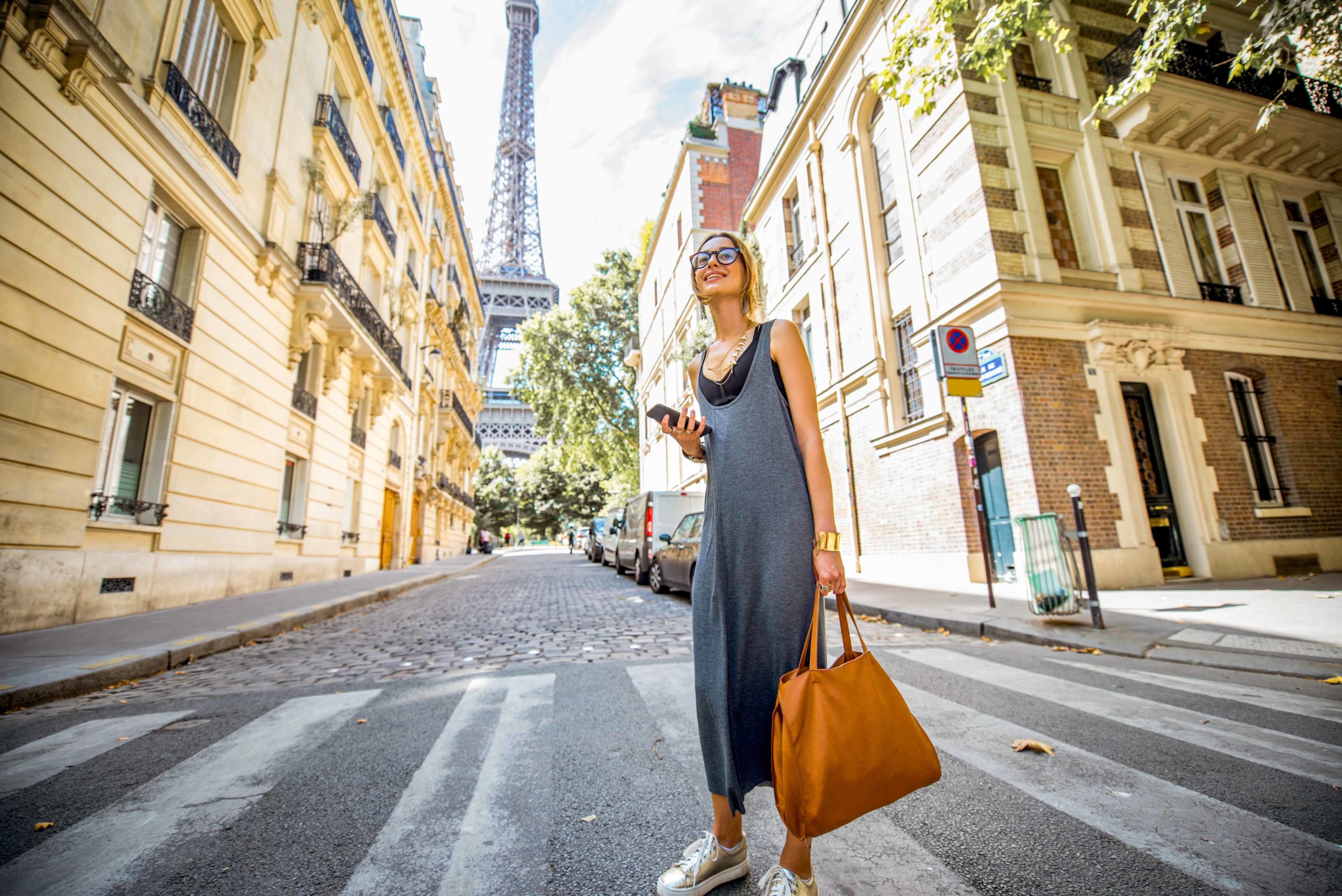How to make the best of your upcoming Paris walking tours? Follow me in this article, where I will give you practical information to make your stay in Paris an unforgettable experience.
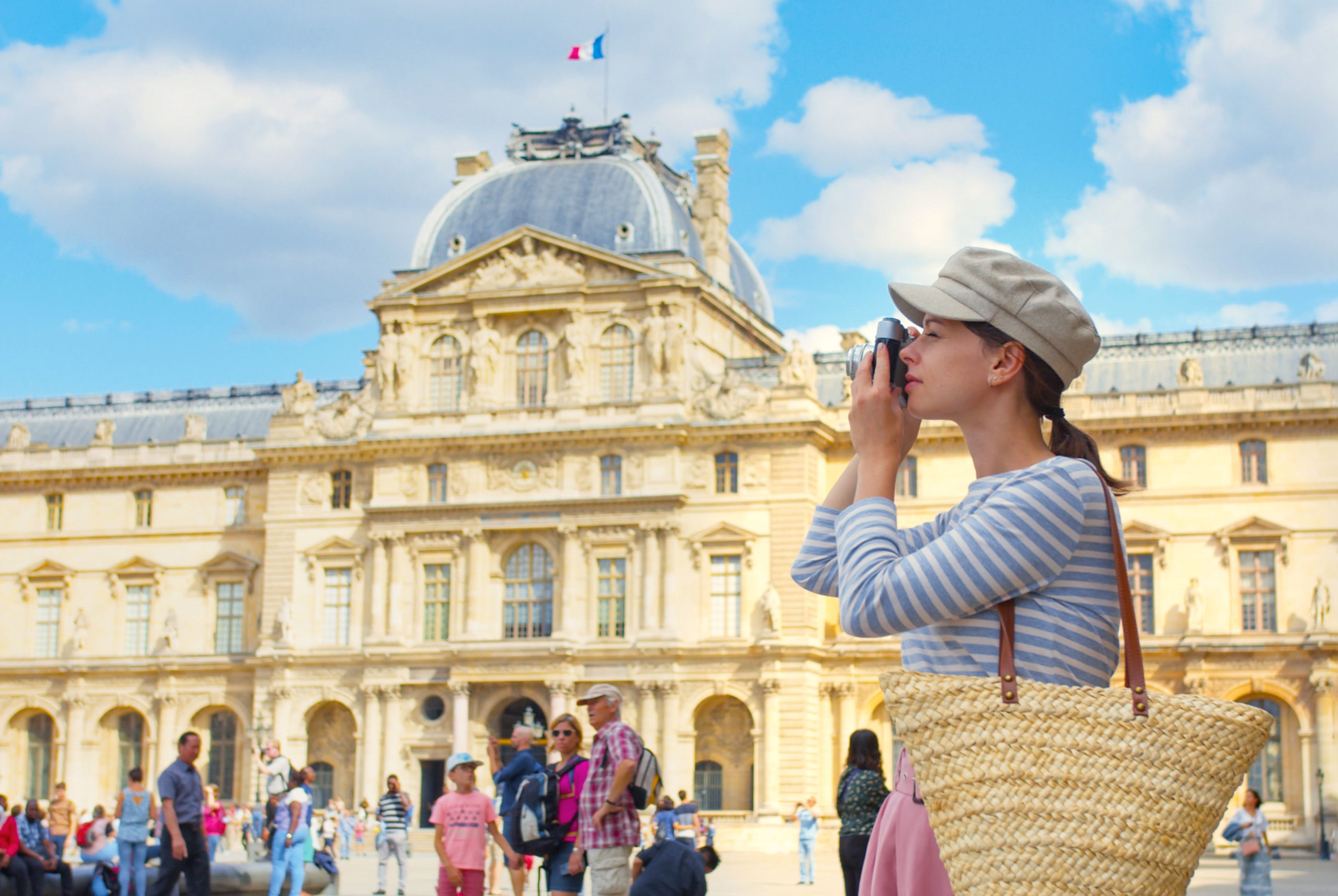
Your first time at the Louvre. Photo by AboutImages via Envato Elements
Beyond that first time in Paris
The first time you visit Paris, you will want to focus on the most famous monuments of the French capital. The Eiffel Tower, the Arc de Triomphe, the Louvre, the Sacré-Cœur...
You will seize this unique opportunity to discover the unmissable districts: Saint-Germain-des-Prés, the Marais, Montmartre...
You may also have time to stroll through the two most beautiful parks in Paris: the Tuileries and the Luxembourg Gardens.
Not forgetting the richest museums in France: the Louvre, the Orsay Museum, the Pompidou Centre...
However, you will undoubtedly want to discover more about authentic Paris on your second visit.
These are the small streets full of history, atypical churches, and hidden Roman or medieval Paris relics.
For this, you will need help: a guidebook or a personal tour guide. One of the best options is to use Rewind, an app that offers you fascinating audio-guided tours to follow in the street, from your smartphone.
Either way, you'll need to do your homework and research. But don't worry, that's all part of the fun!
To help you, I'll give you some good advice on making the best of your upcoming Paris walking tours.

The 25 Landmarks of Paris. Illustration by graphics4u
Paris Walking Tours Tips
Each time I explore a new place, I follow three action words:
- 1. Be Prepared.
- 2. Be Surprised.
- 3. Be Curious.
Let's take these actions one by one.
Be prepared
That is Research. Read. Plan
Before I visit a place, I always take the time to learn about the place I'm about to walk through.
This research allows me to know more about the place I will be visiting so that I don't miss out on something unique or exciting to see.
Websites and Blogs
Of course, I do my research on the internet by consulting the Wikipedia page of the place (if there is one) and by looking for great blogs that deal with the area I am going to visit.
The websites of tourist offices are sometimes attractive because they give you an overview of the sites to see.
Note that, at times, the municipality's website offers more relevant historical and cultural information and goes deeper into the subject. This is the case with the Paris municipality's website.
Book and Guides
I also consult paper tourist guides. However, few of them will allow you to find places off the beaten track, but there are many exceptions! They are often less detailed than blogs, but they can give me a to-do list of must-see sites.
Paris is a city that has inspired the publication of many books.
Several in my library deal with the theme of the little-known Paris and its unusual sites. Unfortunately, some are in French, and others are no longer available, except second-hand.
Google Earth and Street View
I systematically use Google Earth and Street View when available. In fact, Paris is lucky enough to have 99% of its streets covered, which gives you a good idea of the places you will visit later.
On a piece of paper or my smartphone, I write down all the places I want to visit, so I don't forget anything during my stay.
This often allows me to draw up an itinerary that passes through them.
City map of Paris
I also use a city map of Paris. My favourite is the pocket atlas published by Michelin.
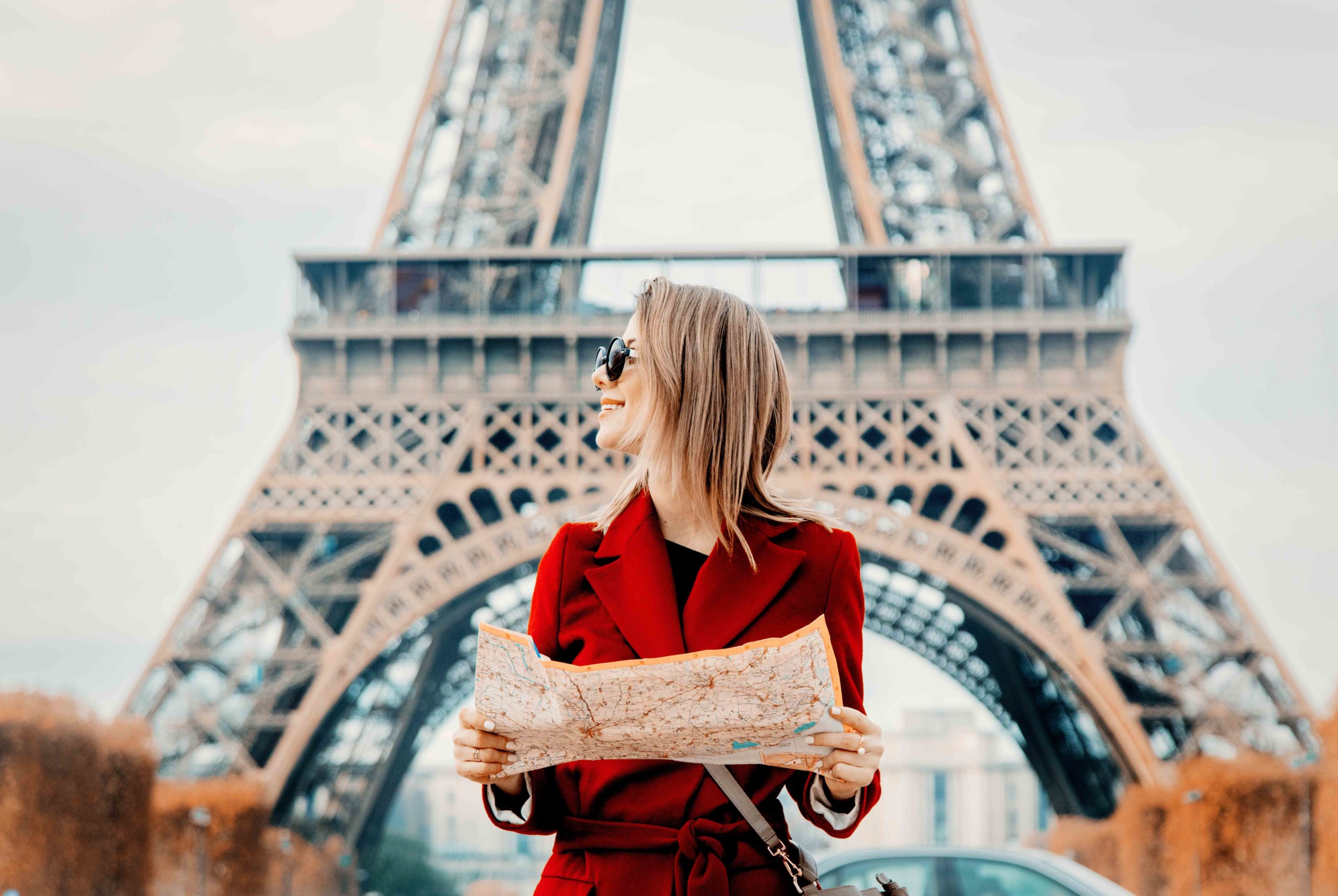
Looking for directions during Paris walking tours. Photo by Masson-Simon via Envato Elements
Planning vs. Surprise
So, you may tell me, Pierre, it's all very well to prepare. But where is the element of surprise?
Unless you're a travel blogger who has to document a destination on your blog 200% of the time, you don't need to go into too much detail - unless it makes you happy!
Find a good balance between planning and surprise.
Free your senses!
And while Google Earth, Google Maps and Street View are incredible tools, they are no substitute for on-the-ground experience.
You may have prepared everything, but when you get there, you will see things, views and perspectives that the Google camera could not bring out on the screen.
And then your other senses will be put to work, especially your sense of smell. Google does not allow you to smell the warm croissants or baguettes from the oven of a boulangerie, or the scent of spring flowers in a Parisian park.
Plan and follow thematic routes
It can be a good thing to organise your route in themes.
Do you want to focus on the medieval sites in Paris? On the churches? On Haussmann's Paris or iconic street furniture?
This is where a good app for your Paris walking tours becomes handy. You can choose the guided tour of your choice, go to the starting point, then follow the voice of your guide from your smartphone. And the app gives you total freedom. You can do your tour whenever you want and with whoever you want!
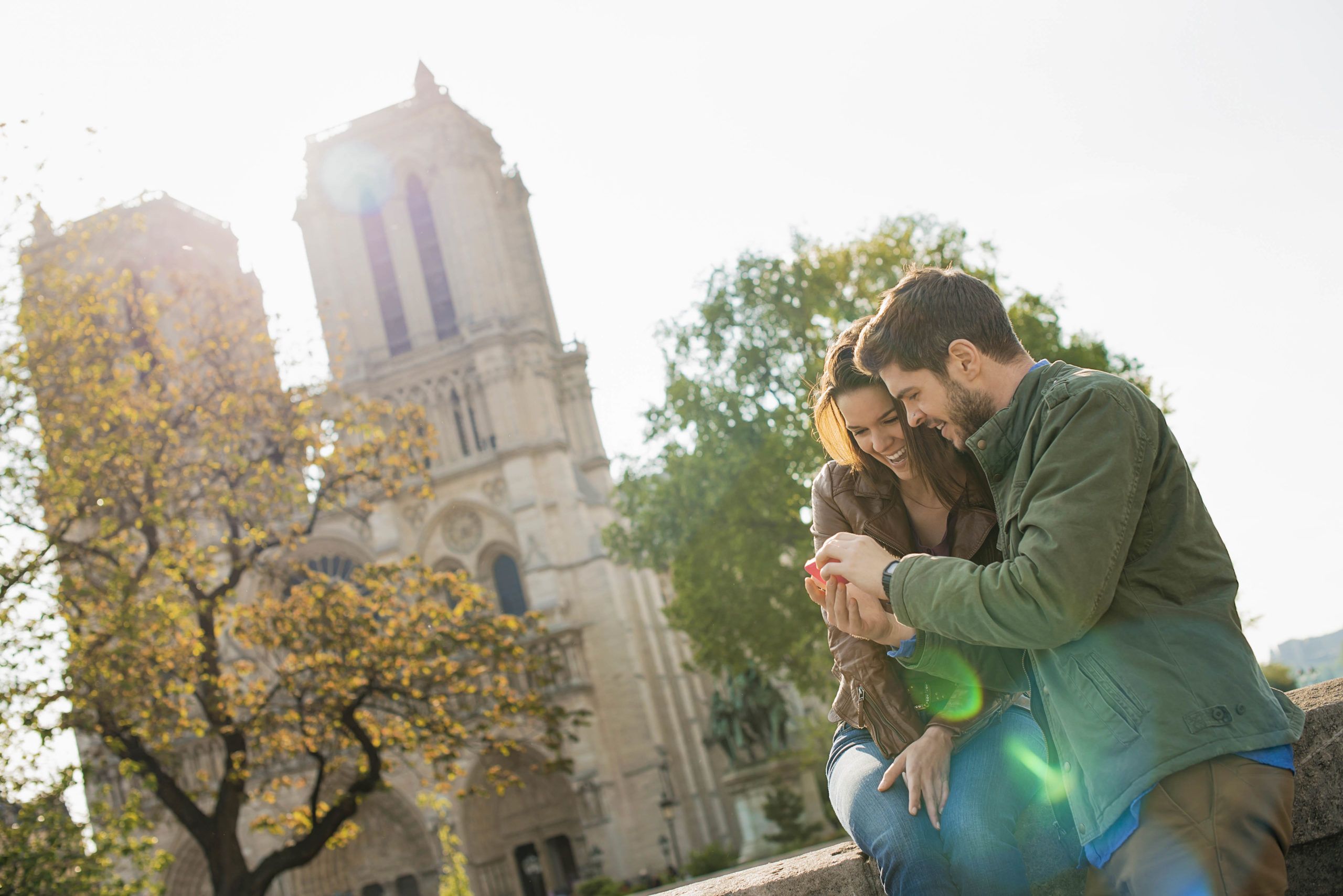
Paris Walking Tours on your smartphone! Photo by Mint_Images via Envato Elements
Be surprised
That is Walk. Look. Discover.
As I said, no matter how much you have prepared, you must keep an element of surprise.
In fact, you will be surprised by a massive amount of things you will not have prepared or seen on Street View.
These are, for example, the views and perspectives that extend beyond a street, a square or an elevated location.
You may see the Eiffel Tower or a famous Parisian landmark at the corner of a street.
You may be tempted to deviate from your route because a street or a park catches your eye.
Take a walk
The best way to discover the gems of Paris is to walk.
Obviously, the underground metro won't help you much.
The bus is an excellent way to admire the city's landscapes without getting tired (especially if you have a seat!).
But the bus, like the taxi or bicycle, is not comparable to walking.
When you walk, you are free to move. Free to stop. Free to look up to detect an architectural detail. Free to change your route if necessary.
In fact, I find that walking is ideal for my favourite activity: looking.
Soak up the surroundings
Look carefully, even if it means sitting on a bench to take the time to soak up my surroundings.
This is what allows me to discover Paris by taking my time.
Like any other giant metropolis in the world, Paris is a city where things happen quickly. This explains why many Parisians pass by gems every day without being aware of their existence.
So take the time to be surprised. Look and discover your own gems.

Coffee during Paris Walking Tours. Photo by Masson-Simon via Envato Elements
Be curious
This means Uncover. Ask. Learn.
German novelist Goethe once said:
"Mere curiosity adds wings to every step".
And I think it applies wonderfully to Paris!
When I gave guided tours in Paris, I really appreciated my clients' curiosity.
Most came from Australia, England, Canada and the United States. And they saw things in Paris that didn't exist at home.
So they would ask me questions about what one thing or another was for. It could be the iconic Wallace fountains or a particular sign on the street. And if I didn't know the answer, that was good for me.
It allowed me to come home and look up the information before emailing it back to them.
Albert Einstein said:
"The important thing is not to stop questioning. Curiosity has its reason for existing."
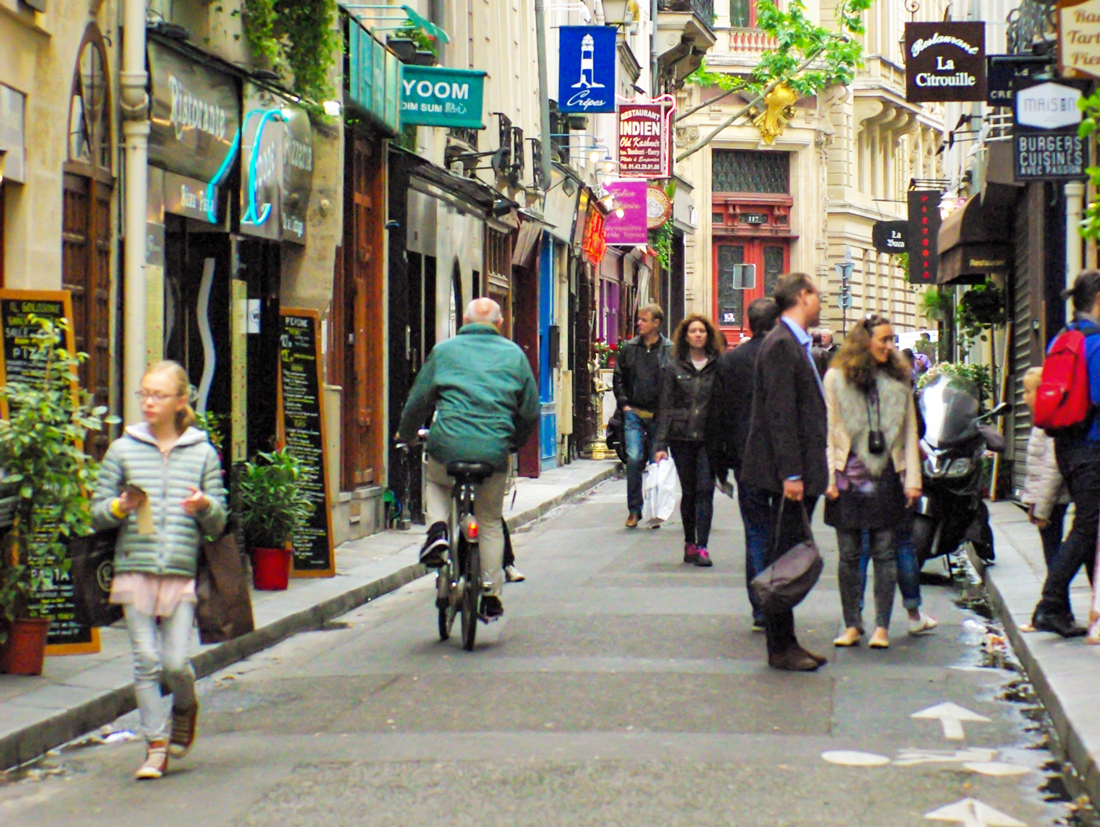
Rue Grégoire de Tours © French Moments
Learning for fun
And so my clients visiting Paris were learning. I was learning.
But the learning experience must be fun. Like a treasure hunt that brings us pleasure.
By the way, I really like what Linus Pauling said about curiosity:
"Satisfaction of one's curiosity is one of the greatest sources of happiness in life."
Go on a treasure hunt
The aim is to enjoy these moments of discovery. It's like going on a treasure hunt. And, as I often say, you need to have the key to open the treasure chest.
And that key is called: curiosity.
So there you have it: my PSC method.
Keep preparing, keep being surprised and stay curious!

Walking along the banks of the Seine in Paris (Ile Saint-Louis) @Svittlana via Twenty20
5 offbeat places in Paris
To end this article on a high note, here are five ideas of places off the beaten track to discover in Paris.

